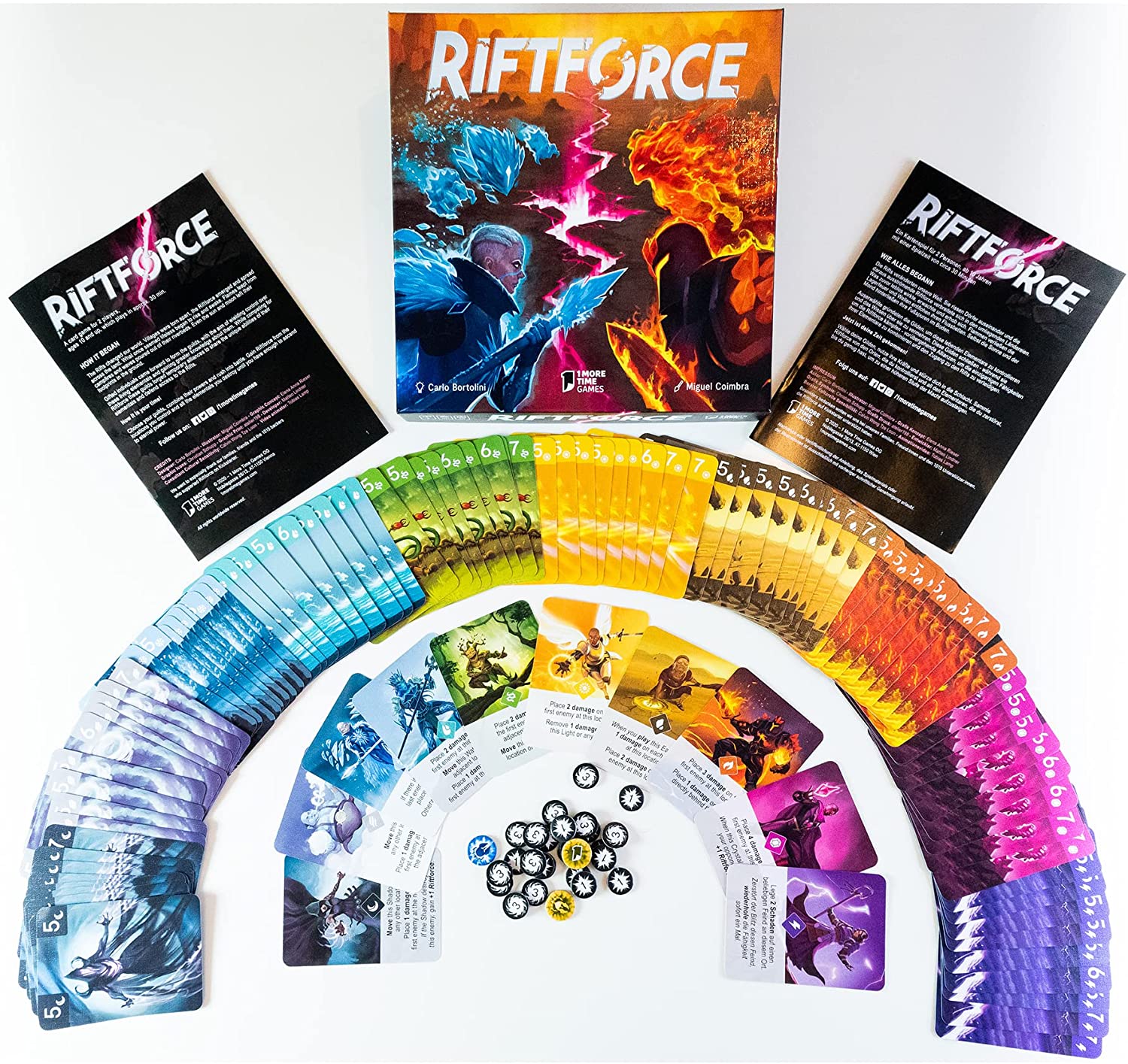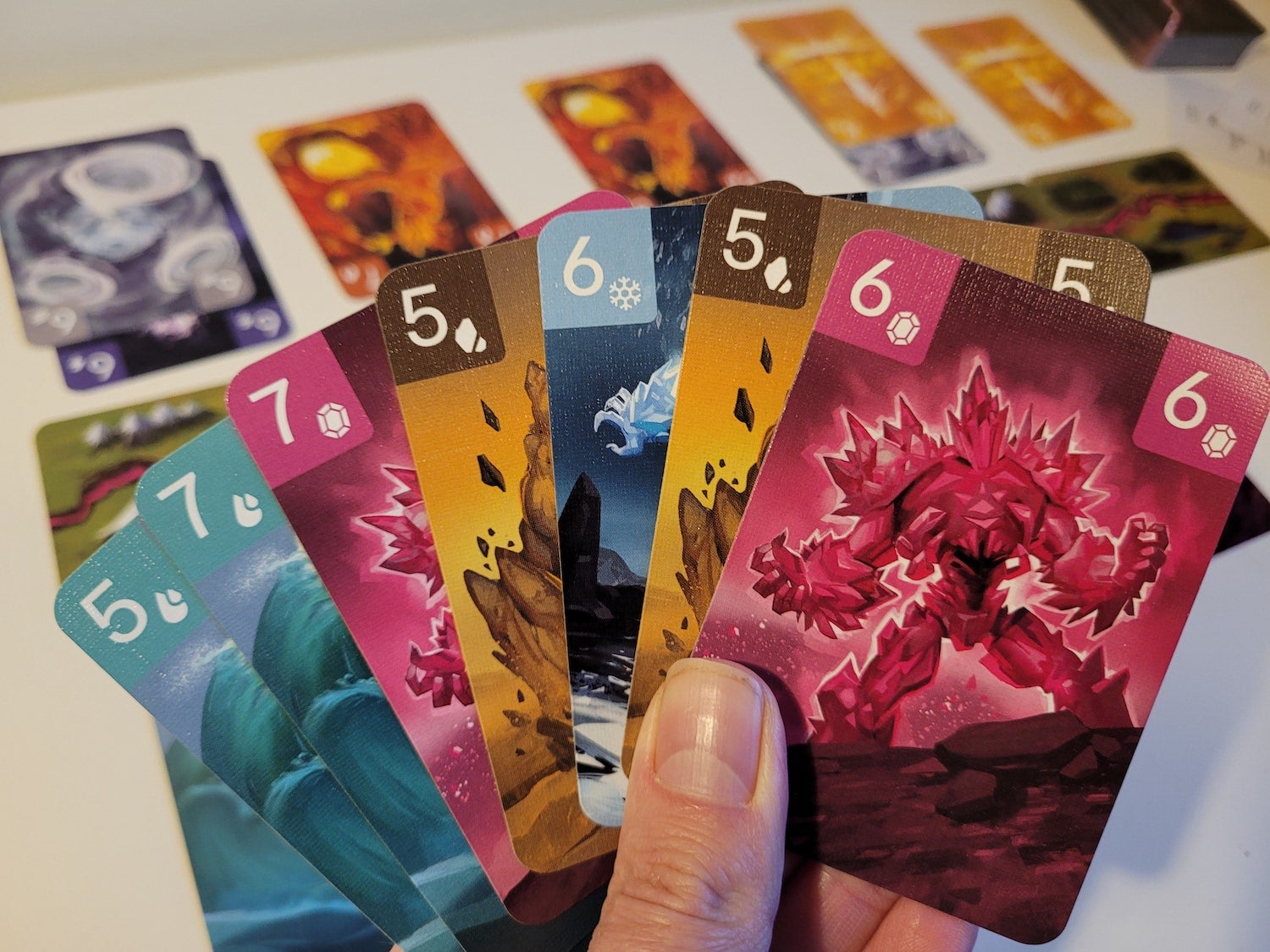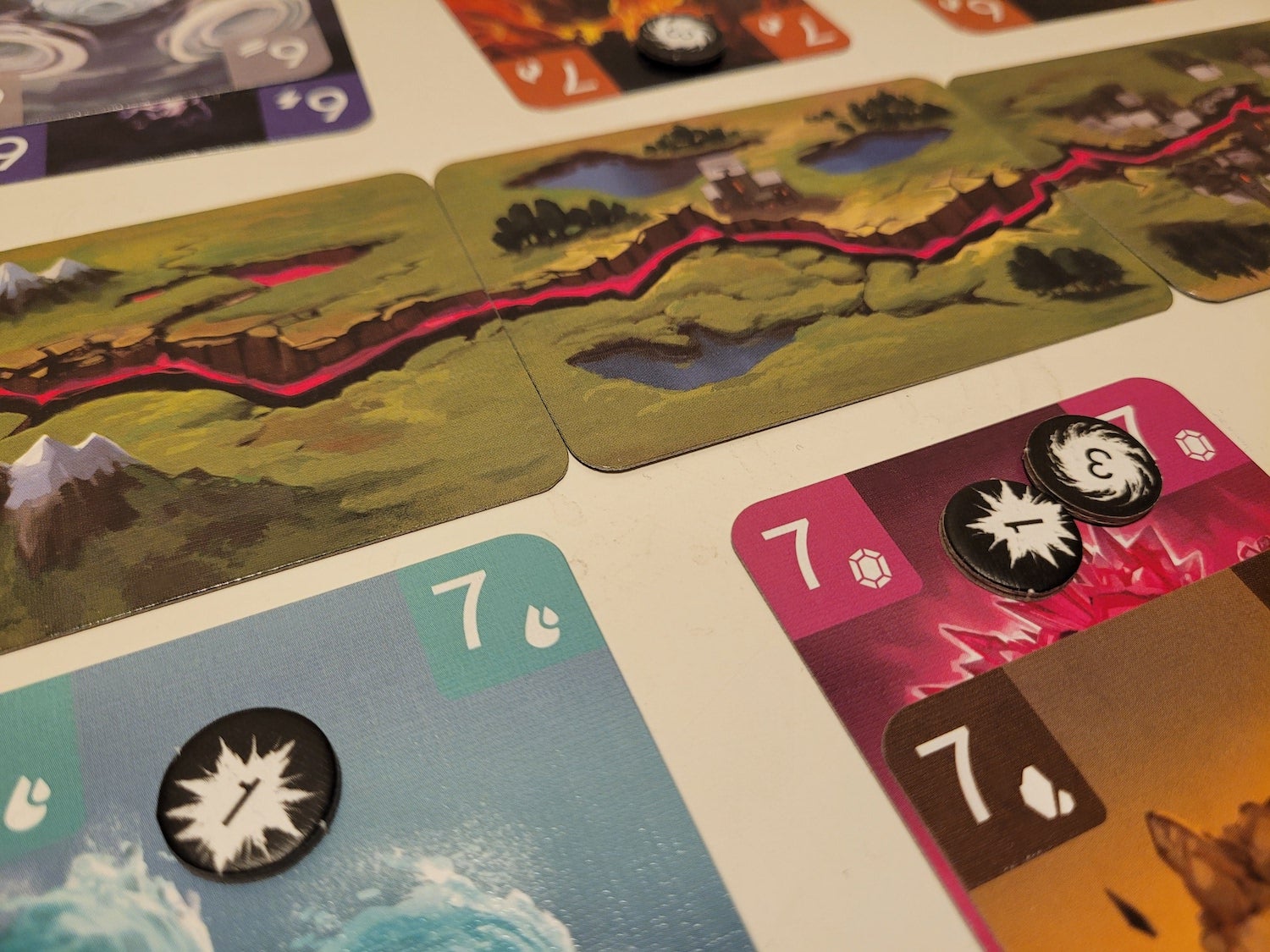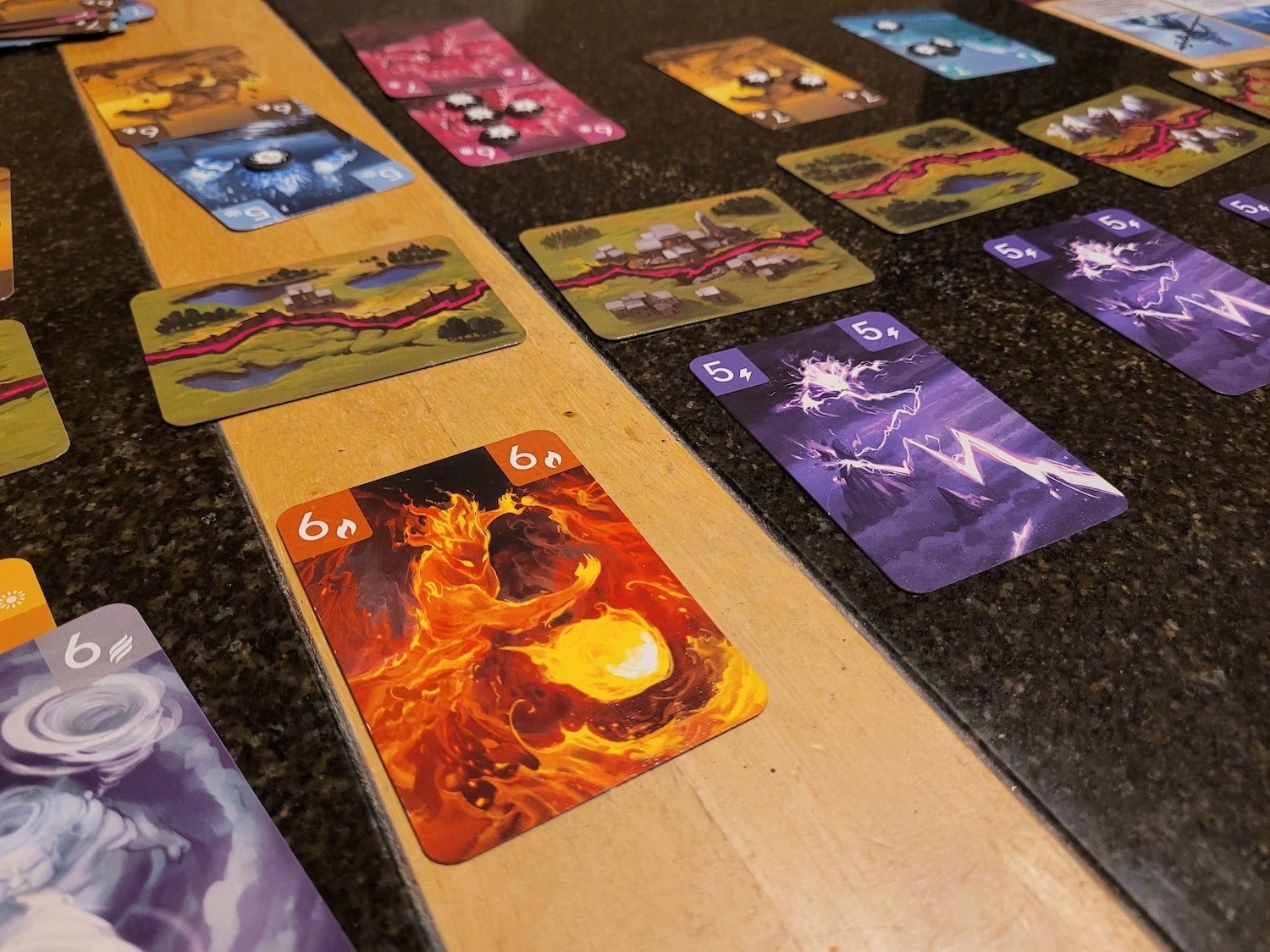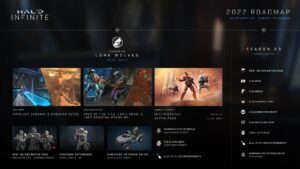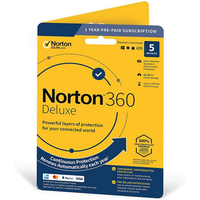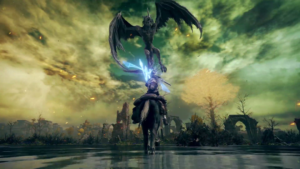Back in 1995, famed game designer Reiner Knizia invented a simple two-player Poker variant you could play with a deck of playing cards. Rather than a betting game, it saw players trying to complete several poker-style hands on their side of the table, trying to get a better result than their opponent’s opposite. It was a sort of area control game with a standard deck and it proved so good it spawned an entire genre, the best known of which is Knizia’s customized design Schotten Totten.
Riftforce is the latest spin on this tug of war formula. Underneath a tiresome and generic fantasy setting, its twist is that rather than trying to make groups of cards, you’re using your plays to attack those on your opponent’s side. It might not sound enough to make this stand out from the crowd, but looks can often be deceiving.
What’s in the Box
This is a card-only game, so it comes in a small, neat box filled with cards and a single sheet of tokens to punch out. There’s nothing in particular to praise or condemn about the contents: they’re functional, with good, evocative art.
Rules and How to Play
You start a game of Riftforce with a fast, simple but high impact deck-building round. The game comes with ten sets of elemental cards, each in the same mix of 5, 6 and 7 health. What’s different about them is their special powers. Lightning elementals deal 2 damage to a card opposite and can repeat the effect if it kills the target. Fire elementals, meanwhile, do 3 damage but also deal 1 damage to a friendly card behind them. Players take turns choosing a set for their deck until each has four.
In the middle of the table between you are five regions. On your turn, you can do one of three things. The first is to play up to three cards of the same number of elemental types from your hand into your side of these regions. That’s what you’ll want to do on your first turn. The second is to discard a card to activate the special powers of cards you’ve played matching the number or elemental type of your discard. The third action lets you score a point for any region where only you have cards on your side, then fill your hand up to seven cards.
These are essentially the entire rules to Riftforce: it’s simple to learn and fast to play. The only thing that’ll trip you up is remembering the special power each set of elementals has, but there are reference cards for that. Yet you’d never imagine such a straightforward set of obstacles could tie you in so many tactical knots.
Like all games in this genre, that’s partly because you’re having to balance what’s in your hand with what you’ve got on the board. It might be tempting to dump out three 7-health elementals on your very first turn if you have them: experience will demonstrate they’re very hard to defeat. But unless you have further matching cards to activate them, you could just be providing cannon fodder for your opponent.
And so the dance begins as you weave around each other, jostling for position on opposite sides of each region, trying not to give your plans away, hoping that luck will deliver what you need the next time you draw up. Although the regular rhythm of having to refill your hand stops you from planning much in the way of strategy, the tactical play hums with excitement and anticipation.
Some of this is down to the nature of this genre, but a lot of it comes from those elemental powers. You might not imagine that a few variations on damage dealing could be so consequential, but Riftforce does a lot of heavy lifting with its straightforward concepts. Some elementals, like Air, can move around but do relatively little damage: a mere one point to the opposite card and its adjacent regions in that case. But that can be very valuable, whisking your elemental out of danger, or allowing you to threaten an empty region.
Between the damage dealing and the moving and managing your hand, there’s a lot to keep you busy here. And as you’ll discover over your first few games, the special powers also bring a new dimension to the card draft that starts the game. While there are no bad elementals in the game, some tribes do work better with others. Once understood, it’s a race not only to try and get the pairings you favor but to stop your opponent from doing the same. And all the different combinations ensure there’s a lot of variety across games.
It’s also worth noting the effect that splitting the playing of cards from activating them has on the game. One of the elementals does a point of damage when played; the rest need to be activated, and it’s a testament to this mechanic that that single immediate point can be quite powerful. Having to wait to power up your cards on the board keeps the tension high as you wait to see what your opponent can do with their cards, and what you’ll have left to respond.
However, that core rhythm of playing, activating and refilling can be problematic. Victory is the first to twelve points, which are scored by contesting empty regions or, more commonly, by killing enemy cards. Close games are common so long as both players handle their decks well. And when it’s close, the question of who creeps over that line first sometimes feels like it comes down to who has to give up momentum and refill. That’s a consequence of player choice, of course, but it’s not one you can foresee, and it can feel frustrating as a result.
That said, the game is so quick and easy to learn and play that the occasional flat hand isn’t a major issue. You can just rack them up and start again, with the chance to re-jig your elemental synergies to try out new tactics.
Where to Buy
Source: https://www.ign.com/articles/riftforce-card-game-review
- 7
- across
- Action
- All
- Allowing
- AREA
- around
- Art
- BEST
- Betting
- board
- Box
- Cards
- case
- Common
- contents
- damage
- deal
- dealing
- Design
- designer
- different
- Dimension
- discover
- down
- experience
- FANTASY
- FAST
- Fire
- First
- game
- Games
- good
- having
- Health
- here
- High
- hoping
- How
- How To
- HTTPS
- Impact
- IT
- Kills
- latest
- LEARN
- lightning
- Line
- Long
- Luck
- major
- managing
- Momentum
- more
- move
- Neat
- Other
- pairings
- planning
- play
- player
- players
- Playing
- Poker
- power
- powerful
- punch
- Race
- REST
- review
- rules
- Said
- set
- setting
- Simple
- small
- So
- Spin
- splitting
- start
- straightforward
- Strategy
- tactical
- tactics
- Target
- The
- TIE
- time
- Tokens
- tribes
- twist
- wait
- war
- Weave
- What
- WHO
- Work
- worth
